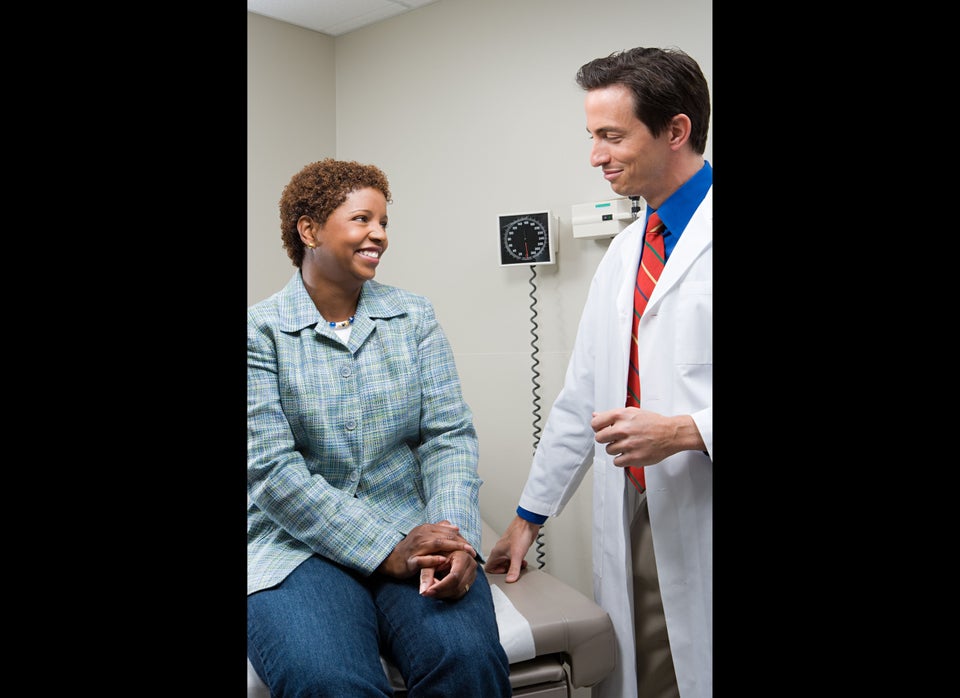"You are HIV-positive" ... these are words that no one ever wants to hear. But each year 50,000 new HIV infections are reported in the U.S. Over 1.2 million people in the U.S. are living with HIV2 and, by the end of 2015, half of those living with HIV will be over the age of 50.
When I heard the words, "your results came back HIV positive," it felt as if I got punched in the stomach and my best friend had died. It was 1991 and I was a nurse at a local hospital. I still had a lot of living ahead of me, but after hearing those words, I went through every single human emotion. I was mad, sad, angry, hurt, lost and confused. I wouldn't call the health department back and I basically resigned myself to dying.
But finally in 1994, I went to a doctor because, at the time, I was pregnant. And then, day by day, I began to live. I worked with my doctors to find a treatment regimen that was right for me. After that, I began to take my medications and encouraged other people to take their medications as well. I was still living well while I was pregnant, which is pretty uncommon for those with HIV. I had energy. I stopped dying and focused on living.
As I continue on my treatment journey, I am realizing that the disease doesn't have to dictate my life. I can balance the stressors of being the CEO of an organization with my roles as a mom and a grandparent. And I can even enjoy my life while I'm doing the balancing! I face the same daily challenges that "normal people" face. I'm Vanessa first and I'm HIV-positive second. I deal with what any 59-year-old would, like my 19-year-old who calls and says, "Mom, my tuition's due."
As I became more comfortable with sharing my diagnosis publicly I decided that it was time to also help others who were facing the same challenges. In 1999, I saw the need for an agency that would serve the community from the perspective of its residents. I founded Empower "U" to help end health disparities amongst minority populations disproportionately affected by HIV. What started out as an idea to create a grassroots, peer-based organization turned into today's newest Federally Qualified Health Center (FQHC) in Miami-Dade County. I'm proud to say that we offer primary and specialty medical care and a variety of support services to all family members, regardless of their ability to pay.
In order to extend this support across the country, I joined a national campaign called Well Beyond HIV. This campaign amplifies the voices, faces and stories of those over 50 who are living with HIV. The centerpiece of the campaign is a traveling art exhibition, curated in collaboration with The Graying of AIDS. Currently, I am one of many people across the country sharing my challenges and successes as we continue treatment for HIV while managing all the other factors that come with aging.
For me, living life to the fullest and sharing my story is extremely important and HIV is just a part of my life. It is important for people to know that you can live a normal life with HIV. Most importantly, I'm preparing for living beyond 59 and discovering all life has to offer.
For more information about the Well Beyond HIV campaign and to learn where the art exhibit will stop next, please visit www.WellBeyondHIV.com.
1.CDC. Estimated HIV incidence among adults and adolescents in the United States, 2007-2010. HIV Surveillance Supplemental Report 2012;17(No. 4). http://www.cdc.gov/hiv/topics/surveillance/resources/reports/#supplemental. Published December 2012.2.1 CDC. Monitoring selected national HIV prevention and care objectives by using HIV surveillance data - United States and 6 U.S. dependent areas - 2012. HIV Surveillance Supplemental Report 2014;19(No. 3). Available at: http://www.cdc.gov/hiv/library/reports. Published November 2014. (Accessed November 25, 2014).3.Steven G. Deeks and Andrew N. Phillips (2009). "HIV Infection, Antiretroviral Treatment, Aging, and Non-AIDS Related Morbidity."
Earlier on Huff/Post50:
